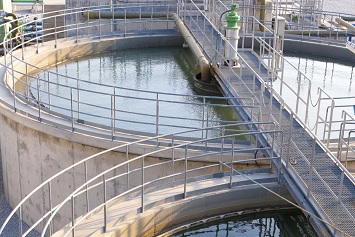Back in April 2018, ex-EPA Administrator Scott Pruitt announced that the Agency intended to begin rulemaking “to provide certainty surrounding the use of ‘blending’ by wastewater treatment plants.” The EPA has now scheduled three meetings to receive public input on how blending might be permitted to account for infiltration and inflow (I/I) into separate sanitary sewers. The Agency has published a notice describing the issue and providing a list of questions on which it is seeking feedback (August 31, 2018, Federal Register (FR)).

Blending
Blending is an approach wastewater treatment plants (also called publicly owned treatment works (POTWs)) use to manage above-normal wastewater flows resulting from rainfall or snowmelt. If the POTW does not have the capacity to fully treat excess flows before discharge, it will deliver the flows to primary treatment (typically settling out of solids) and then route them around secondary treatment (typically biological treatment). The routed flows and the flows that have received secondary treatment are then blended before discharge.
In contrast to combined sewer systems, which carry both stormwater and sanitary wastewater for delivery to the treatment plant, separate sanitary sewers are designed to carry only sanitary wastewater. However, separate sanitary sewers typically are built with some allowance for higher flows that occur during storm events to handle minor and nonexcessive amounts of stormwater or groundwater that enter the system through I/I. Virtually every separate sewer system experiences I/I. Historically, small amounts of I/I are expected and tolerated. However, excessive I/I may cause overflows or bypasses.
Treatment
The EPA’s notice is specific to I/I that occur at separate sewer systems. The Agency notes that where peak influent flows during periods of wet weather exceed the treatment capacity of existing biological or advanced treatment units, POTWs must consider ways to prevent damage to their treatment plant, while maintaining effective operation of the system to meet applicable National Pollutant Discharge Elimination System (NPDES) permit limitations. Strategies available to operators to manage excessive I/I include storage and sewer maintenance and rehabilitation. Blending is a management approach that has been generally favored by POTWs; however, under the Obama administration, the Agency voiced opposition to blending, although no regulatory actions were taken. The EPA’s April 2018 announcement suggested that the Agency is inclined to reverse that position.
Questions
In conjunction with the upcoming meetings, the EPA has informed the public, POTWs, and other stakeholders about its major concerns through the following questions:
- What strategies have you found to be successful in reducing peak flow volumes at POTWs?
- What permitting or other regulatory approaches are you aware of that, in your opinion, provide a good basis for any rulemaking in this area?
- What treatment technologies have POTWs with separate sanitary sewer systems used successfully to manage peak excess flows during wet weather?
- How effective are these technologies at meeting effluent limitations?
- What are examples of technologies addressing other pollutants not typically subject to discharge requirements in NPDES permits (e.g.,pathogens)?
- What are your specific suggestions regarding conditions that could be included in NPDES permits to allow diversions of some peak flows around biological treatment units to protect the treatment plant? Considerations could include:
- What information might the NPDES permitting authority need in order to determine whether such diversions are necessary to protect the treatment plant?
- Should the number of times such diversions are permitted to occur be limited or reported?
- Are there requirements that should be considered for ensuring that the treatment plant is operated and maintained in an effective manner to minimize the number of peak flow diversions that occur?
- What requirements would be appropriate for ensuring that maintenance of the collection system to minimize the introduction of stormwater into the sanitary system through I/I is occurring?
- What monitoring and reporting requirements would be important to demonstrate that applicable effluent limits are still being met?
- How may the permit ensure that public and ecological health are protected?
All the public meetings are scheduled for October 2018. The EPA asks that written statements be submitted to the rulemaking docket (EPA-HQ-OW-2018-0420) by October 31, 2018.
